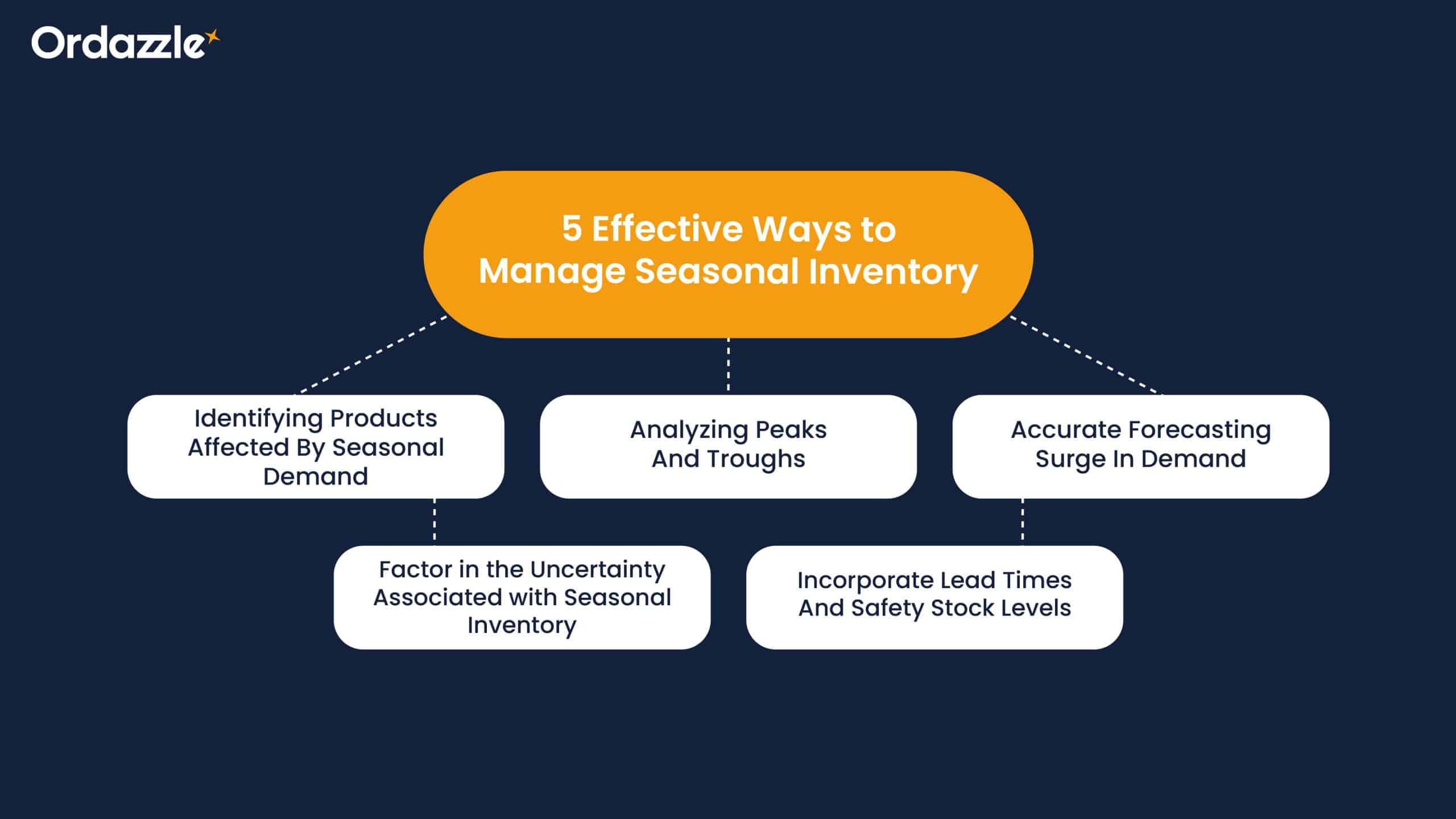5 Ways to Manage Seasonal Inventory to Meet Surge in Demand

Let’s face it: inventory planning is a complex balancing act, especially when the demand for your product isn’t uniform throughout the year.
Yes, many businesses struggle with seasonal inventory demand and the uncertainties, bottlenecks, and setbacks that come with it.
In fact, seasonal items can account for over 50% of a company’s total annual sales in some cases!
As such, inventory management becomes a crucial aspect of the process, and poorly managed inventory flows can sink your profit margins and prevent you from making the most of the season.
Doing inventory control management right can help you turn this bane into a boon and ramp up your revenue.
In this article, we’ll go over what a seasonal demand spike is, how it affects the supply chain, how you can effectively manage inventory during the spikes, and how inventory management software can come in handy.
What Is Seasonal Inventory Demand?
An item or product line experiences seasonal inventory demand when there are peaks and troughs in its demand at certain times of the year.
This seasonality can occur for many reasons; for instance, customers may find use for a particular product only during festivals such as Christmas or Diwali. A good example is Diyas.
Or, a product may be predominantly used during summers (like sunscreen) or winters (like hoodies)
Whatever may be the reason behind this seasonality, one thing remains constant: seasonal demand can wreak havoc on inventory planning, particularly forecasting.
Also, these seasonal spikes affect every node of the supply chain. So, accurate and proactive inventory control management becomes a must.
- Manufacturers must be ready to ramp up production or have enough stock available for a sudden increase in orders, especially if they sell the product to service multiple businesses with the same product requirements.
- Distributors need to order plenty and well in advance from their suppliers—especially if there are long lead times.
- B2C resellers and retailers must carry accurate amounts of stock to meet the spike in customer demand.
Also Read: 5 Tips For e-Commerce Inventory Control Management
How to Effectively Manage Seasonal Inventory?

If you sell or manufacture seasonal goods, it’s essential that you manage their demand optimally to ensure adequate stock levels at all times.Here are five key processes you should follow.
1. Identify Which Products Are Affected By Seasonal Demand
Begin by identifying which of your stock-keeping units (SKUs) exhibit seasonal inventory demand spikes. This can be easily done by analysing the previous years’ demand data and looking for patterns.
Ensure that you take into account more than a year’s worth of data to clarify that the pattern isn’t a one-off trend and is seasonal.
2. Recognise When The Peaks And Troughs Will Happen
Once you have a group of seasonal SKUs, you now need to determine when their demand season is—that is, when can you expect customer demand to rise and then fall?
3. Accurately Forecast the Relative Size of the Surge
Calculate the usual demand during the off-season, and the same for the peak season. Again, you will require past demand data to do this. For instance, maybe for ten months of a year you sell, on average, 1000 T-shirts per month. But then, for the remaining three, you sell 2000 per month.
Data points like these will help you determine what stock levels you must maintain throughout the year as demand fluctuates.
Also, look for long-term demand trends. For instance, has the demand for t-shirts changed over the past five years? Say, peak demand in Year 1 was 2500 but has risen to 3000 by Year 5.
Again, factoring in both short- and long-term trends will help you generate an accurate forecast.
4. Factor in the Uncertainty Associated with Seasonal Inventory
Even if you consider a large enough dataset of year-wise demand statistics, unknown demand fluctuations still occur.
For instance, say you sell shovels, and the forecast for the month is the sale of 40-50 shovels. However, if your region has an uncharacteristically warm winter, you may not sell as much and may end up with extra stock at the end of the peak period.
New competitors and a general decline in product demand can also introduce this uncertainty.
5. Incorporate Lead Times And Safety Stock Levels
After calculating your demand, you also need to take care of supply variables. And part of it includes knowing your manufacturing or supplier lead times, especially if they are long, because you won’t be able to replenish items that sell fast.
So, ensure you add lead times into your replenishment and ordering calculations for each SKU. Adding buffer safety stock is also a prudent measure to reduce the stock-out risk and cover lead time.
However, it can feel overwhelming to comb through the demand history of each SKU, identify those that have seasonal inventory issues, generate accurate forecasts, and factor in supply variables.
If done manually, the process can take a lot of time and resources, not to mention, be susceptible to human error.
Fortunately, an inventory management system can do all this for you!
Forecast Seasonal Demand With Ordazzle’s Inventory Management System
As mentioned earlier, the first step in effectively managing your seasonal inventory demand spikes is effectively identifying which SKUs adhere to seasonal demand patterns.
Ordazzle can help you do this in a seamless, automated way, analysing each SKU’s demand history and searching for the same pattern year after year. It then also finds items with the same demand patterns, assigning each a seasonal profile so they can be managed similarly.
This allows you to place orders for the relevant products in time for their seasonal peaks.
With the help of inventory management software like Ordazzle, your team can seamlessly manage seasonal items much more effectively. With order management and automated forecasting functionalities, they no longer have to deal with seasonality manually.
Instead, your team can proactively prepare for spikes and reap the rewards of optimized inventory control management. Get in touch today to learn more.


